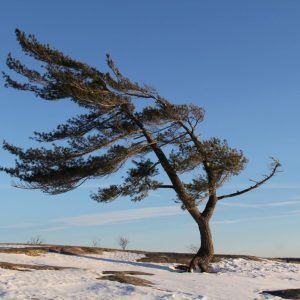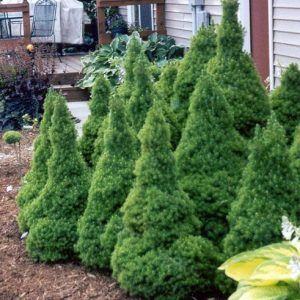When most people think of a majestic deciduous tree with massive spreading branches and full, luscious leaves, they will think of the mighty ash. Even in tighter, enclosed urban or suburban yards, the Manchurian or Mancana ash (Fraxinus mandshurica) is the perfect specimen due to its lush crown but relatively small canopy. The Manchruian ash spreads like a mushroom, with a smaller trunk and medium-sized canopy, but with a full and flourishing but tapered crown that will wow neighbours, friends, and arboreal rivals on your block.
Although the Manchurian Ash is native to northeast Asia, the tree grows in abundance in Alberta, and is a common fixture in Edmonton’s “urban forest.” The tree will eventually grow roughly 45 feet in height with a maximum width of 25 feet. Its upward arching branches are so incredibly strong and hefty that they can easily shrug off the heaviest Alberta snowfall and even ice storms with ease. In the summertime, the bright green leaves offer a fresh look, but once fall rolls around, the tree’s true colours are revealed — in sharp, vivid yellows, a colour scheme that remains all autumn until the leaves fall all at once (requiring only a single raking). After the leaves fall, the bark of the tree shows off an impressive chromatic yellow hue all winter long.

One reason that Manchurian ash is so prevalent in the Edmonton area is due to its legendary hardiness. The tree can survive temperatures as low as -40°C, and year-round, it displays no pest problems, and can tolerate a variety of sub-par soil conditions, from the extremely wet to the extremely dry. But with proper soil and watering conditions, the Manchurian ash will usually grow 2 to 3 feet per year.
These ideal growing conditions — both rurally and in urban settings — mean that the ash is sometimes cultivated as an ornamental tree in Canada and the U.S. The tree is popular in rural Alberta as it can be put to use as a medium height wind break for a farmstead, while still looking beautiful. Within the city limits, it is exceptionally tolerant of air pollutants and grows upward and outward, which means it is rarely hampered by housing or power lines, in fact, as it grows, it develops a dense, oval form perfect for city living.
While the tree is gorgeous, it is not impervious to health problems. The Manchurian ash is especially vulnerable to Anthracnose disease, which recurs every year. In recent years, many Edmonton-area mancana ashes are losing their twigs and branches as the disease weakens the overall growth structure. As the twigs and branches wither and die, they are flattened and deformed by the Anthracnose disease and they develop a noticeable bow-like form.
Another common condition that can affect Manchurian ash is fasciation — which causes the branches and twigs to abnormally fuse and become flattened or ribbon-like in their growth and appearance. While it is not known what precisely causes fasciation in ashes — common culprits are believed to be environmental stress, genetic growth malfunctions, viral diseases, or some combination of these. Much like an auto-immune deficiency in humans, fasciation will then expose the ashes to a more common illness (such as Anthracnose disease or drought) which will then begin to kill them directly. Southern parts of Manitoba and Alberta have recently experienced drought which has put a number of ash subspecies in jeopardy (especially with the concurrent prevalence of Anthracnose and fungal diseases).
The best way to prevent this fasciation and the resultant spreading of disease is to have your Manchurian ash regularly pruned by an arborist. Trusting a tree care expert will ensure that the pruning is done properly. Pruning may seem like an easy task at first, but a tree care or removal expert will ensure that the pruning tools are properly sanitized between each and every cut (as improper sterilization will only lead to the further spread of disease). Tree pruning is the arboreal equivalent of medical surgery, and in much the same way that you would not trust an amateur at the operating table, neither should you trust the pruning of your Manchurian ash to anyone other than a trained professional.
If you see flattened or ribbon-like twig growth in your trees or shrubs — especially in your Manchurian ash species — contact our expert arborists here at Chipps Tree Care. We will help you prune your ash, or, if the problem is too severe, we can help you safely and efficiently remove the diseased tree entirely. Because tree planting in Edmonton is easier than ever, the pros here at Chipps Tree Care can even plant a new tree for you in place of the old one, to maintain the your yard’s overall tree presence. If you want to get the most out of your Manchurain ash — or any other tree species — let’s talk. Our dedicated, accredited, and expert arborists can help maximize your yard’s potential through exemplary tree care and removal services.
























